Special Report
What America's Biggest Cities Have Looked Like Since the 1920s
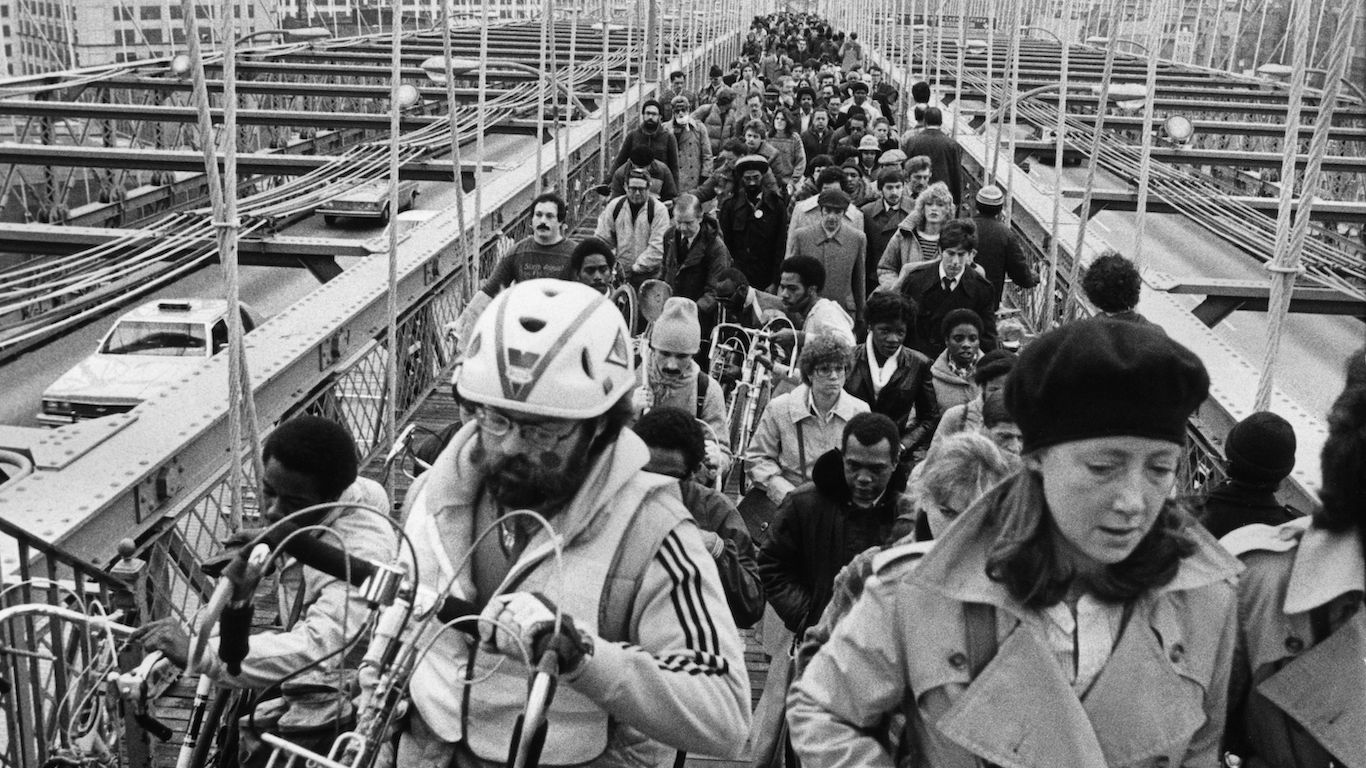
Published:

The story of the most populous cities in the United States is an evolving one that reflects economic, cultural and demographic shifts. Few nations have experienced such profound changes as the United States has in the 243 years since its founding in 1776.
America’s largest cities by population have changed over the decades, and 24/7 Tempo has reviewed data from the U.S. Census Bureau to identify what cities were the most populous the decade you were born.
At the time of the first census in 1790, there were 3,929,214 people living in the 13 states bordering the Atlantic Ocean. Cities on the Eastern Seaboard such as New York City, Boston, Philadelphia, and Baltimore swelled in size throughout the 19th century because of immigration from Europe. Manufacturing, transportation, and industrial centers developed around the Great Lakes region and the Midwest in the 19th century, fueling the rapid growth of Detroit, Cleveland, and Chicago. The long histories of these cities help explain how many are where some of America’s oldest homes are still standing.
Post-World War II prosperity put Americans in cars, and the building of the interstate highway system in the 1950s accelerated the suburbanization of the United States. The newer cities of the West and South were defined more by the automobile than the mass transportation systems of the older, Eastern cities.
Over the last 100 years, Chicago and Philadelphia have shed and regained population to stay among the top 5 most populous cities. Detroit, which had nearly 2 million people in the 1950 census and was among the top 10 most populous American cities in the 20th century, has lost almost half of its population and is considered one America’s worst cities to live in.
Click here to see what the most populated cities in America looked like the decade you were born
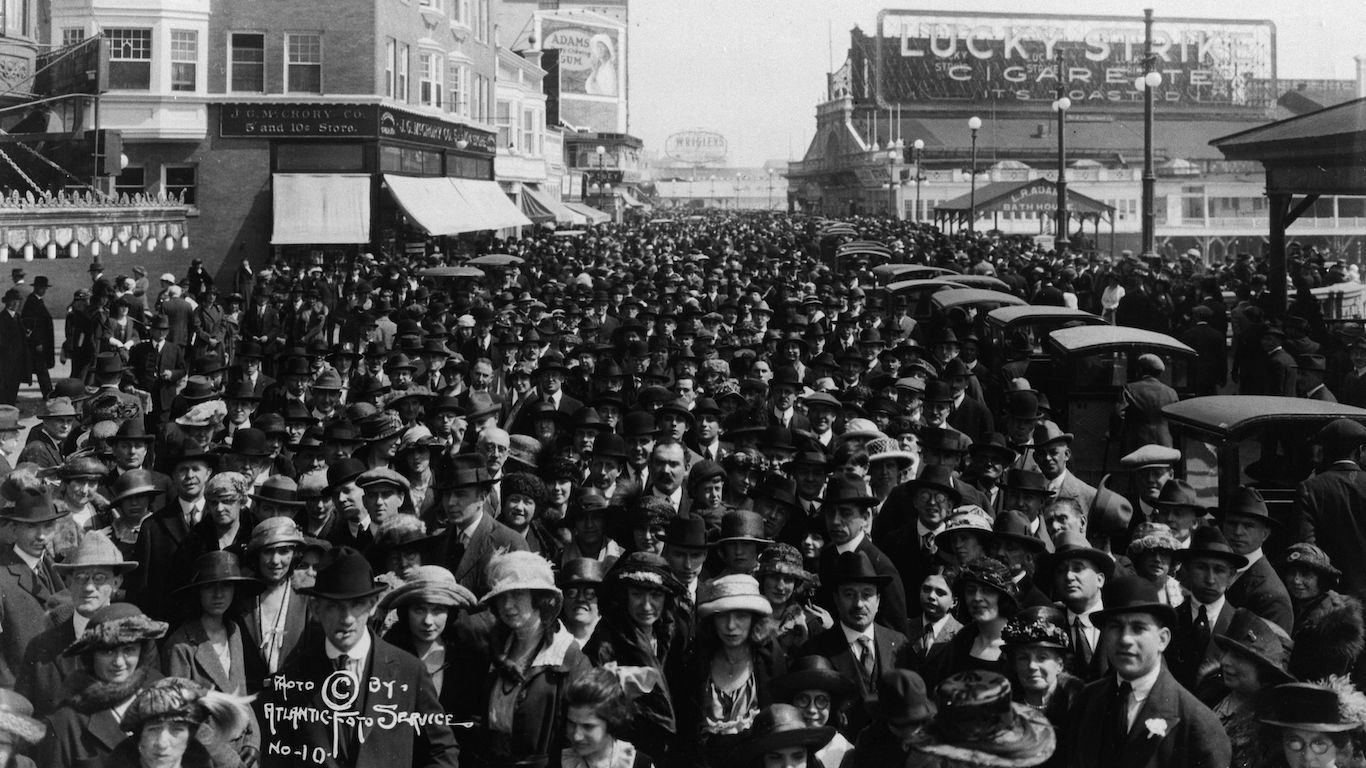
1920s
> United States population: 106,021,537
> New York: 5,620,048
> Chicago: 2,701,705
> Philadelphia: 1,823,779
> Detroit: 993,078
> Cleveland: 796,841
The rise of the automobile industry in the Detroit area fueled the growth of that city between 1910 and 1920, doubling its population in only 10 years. The 1920 census was the only census in which Cleveland made the top 5 largest cities in the United States. The 1920 census marked the first appearance in the top 10 for Los Angeles.
[in-text-ad]
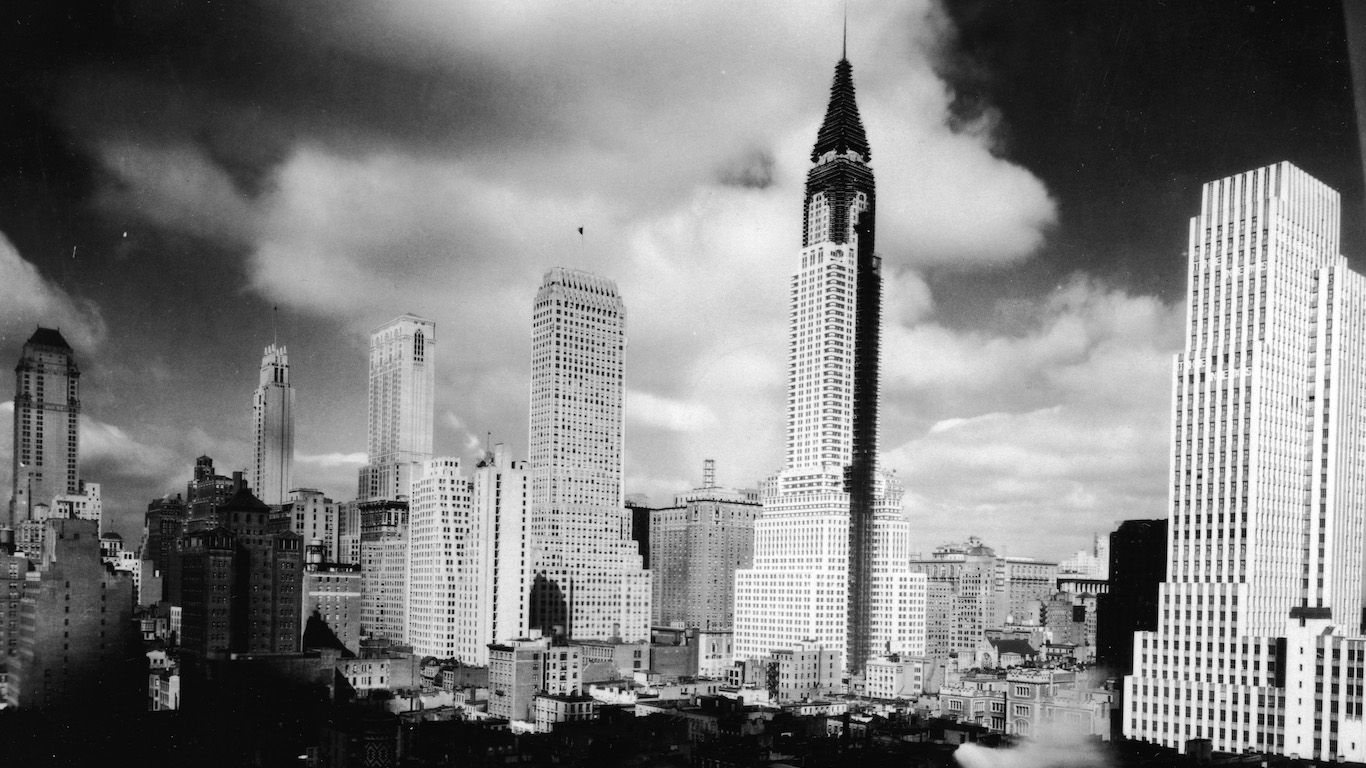
1930s
> United States population: 123,202,624
> New York: 6,930,446
> Chicago: 3,376,438
> Philadelphia: 1,950,961
> Detroit: 1,568,662
> Los Angeles:1,238,048
New York City was the largest city in the world by 1930 and would remain so for the next 50 years. Barely 60 years after the fire that devastated the city, Chicago became the second city in the United States to surpass 3 million people. Mail order companies Sears Roebuck and Montgomery Ward were both located in the Chicago area, taking advantage of the confluence of railroad lines in the Midwest to expand. Los Angeles, fueled by the burgeoning film industry, became the first West Coast city to make the top 5 and to surpass 1 million people.
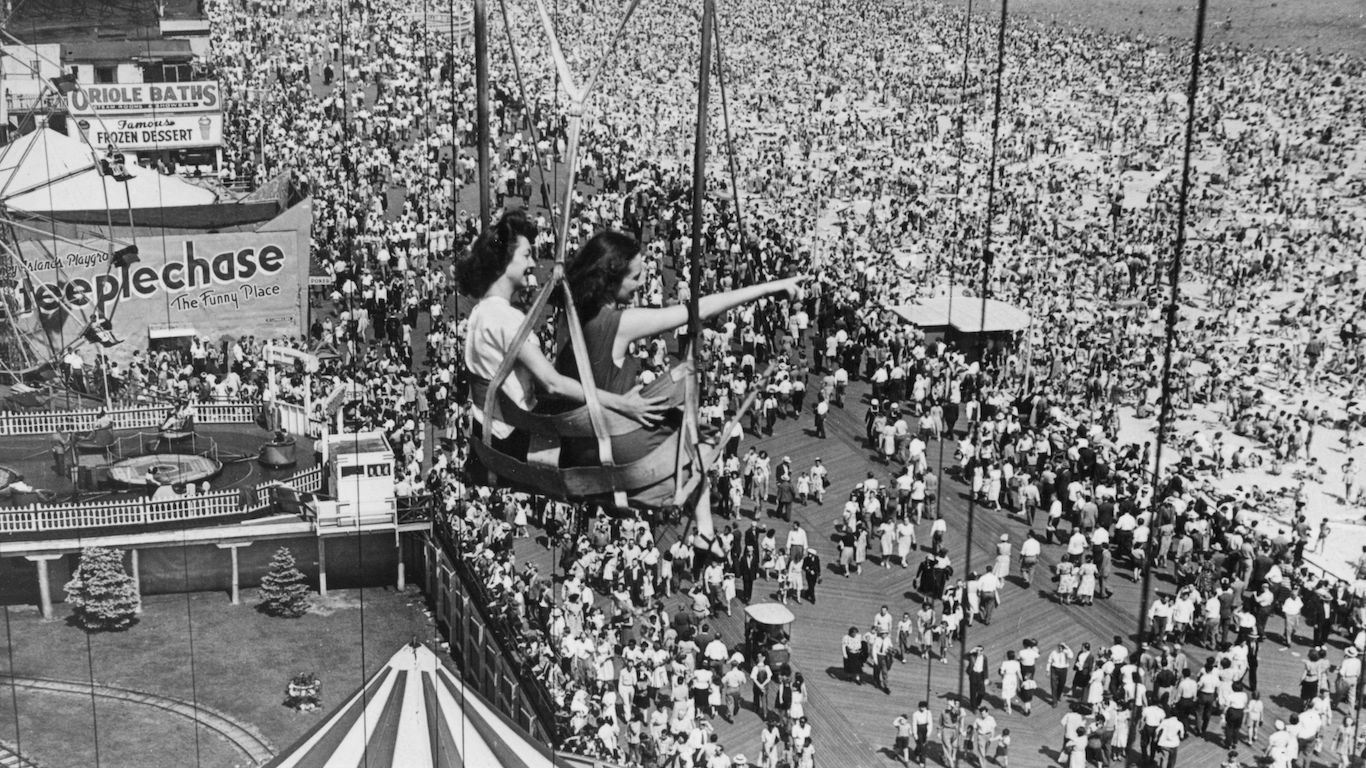
1940s
> United States population: 132,164,569
> New York: 7,454,995
> Chicago: 3,396,808
> Philadelphia: 1,931,334
> Detroit: 1,623,452
> Cleveland: 878,336
In Depression-era America, the populations of New York and Chicago rose. However the populations of Philadelphia, Cleveland, St. Louis and Boston all recorded their first-ever drop in the 1940 census.
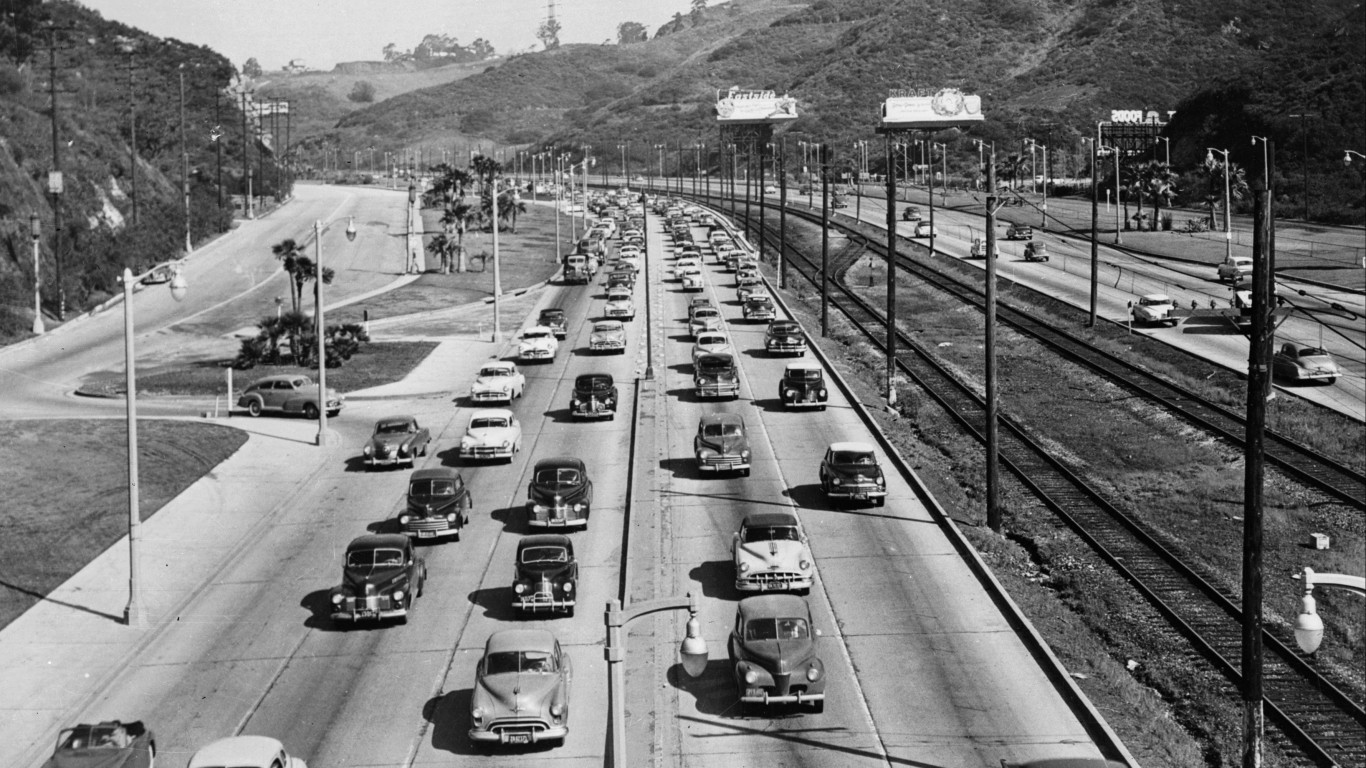
1950s
> United States population: 151,325,798
> New York: 7,891,957
> Chicago: 3,620,962
> Philadelphia: 2,071,605
> Los Angeles: 1,970,358
> Detroit: 1,849,568
The post-war era marked the beginning of a seismic shift in the United States as the nation’s population began to move west. Eight U.S. cities in the top 10 peaked in population in the 1950 census. It also marked the first appearance in the top 10 for Washington, D.C. since the 1820 census, as the nation’s capital grew in size and stature following the dramatic increase in government during and after World War II.
[in-text-ad-2]
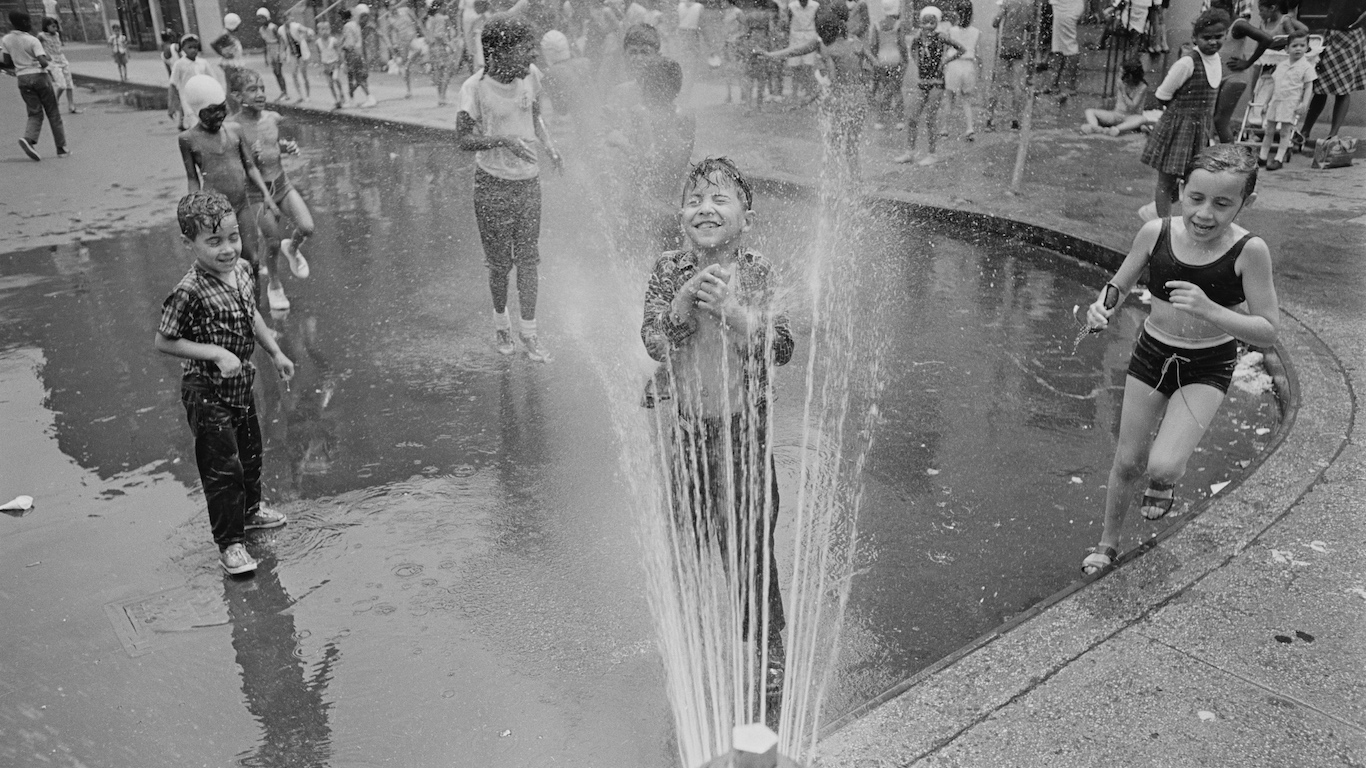
1960s
> United States population: 179,323,175
> New York: 7,781,984
> Chicago: 3,550,404
> Los Angeles: 2,479,015
> Philadelphia: 2,002,512
> Detroit: 1,670,144
The creation of the interstate highway system during the presidency of Dwight Eisenhower accelerated the exodus of people out of cities and helped make suburban America. By the time of the 1960 census, New York City, Chicago, Detroit, Washington, and Baltimore all posted population declines. Houston made its first appearance in the top 10 as the economy in Texas, boosted by the oil patch, expanded. After 60 years as the nation’s third-largest city, Philadelphia dropped to the fourth spot on the list behind Los Angeles.
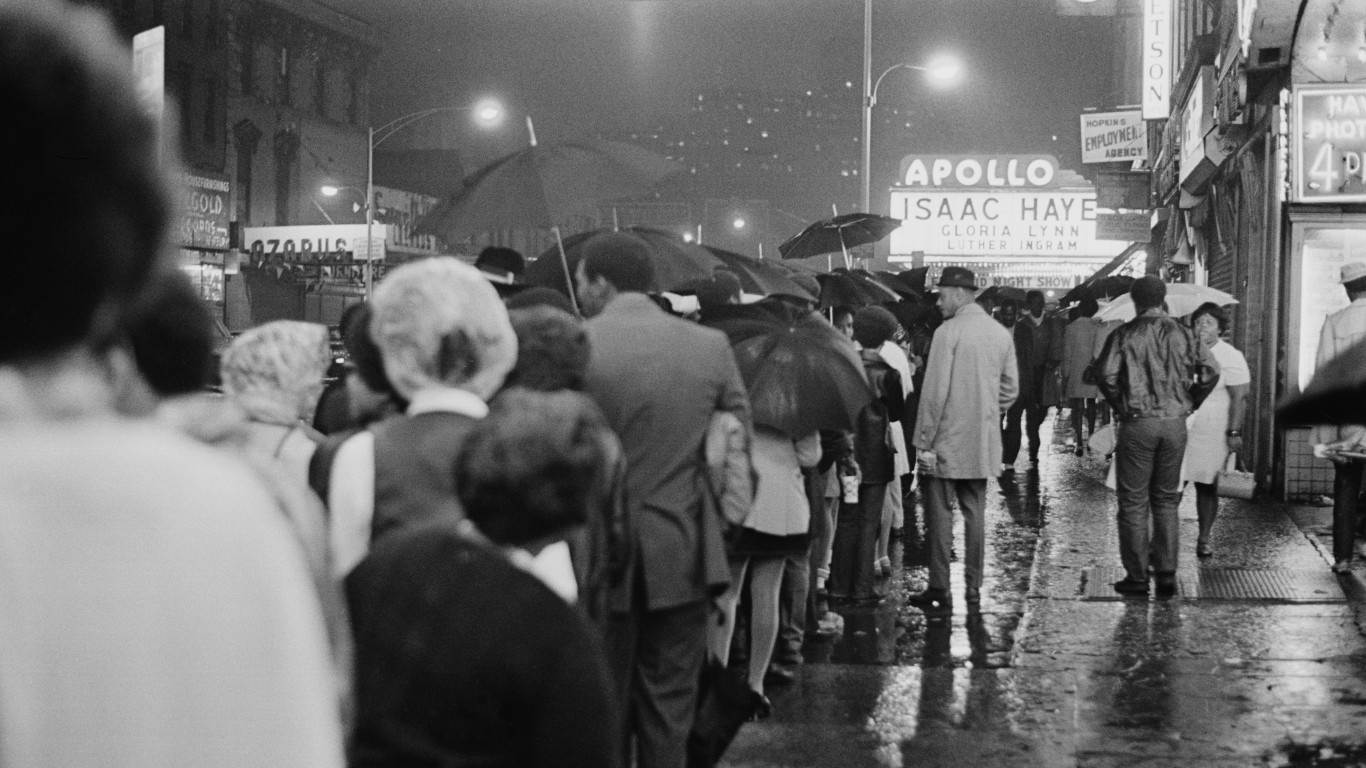
1970s
> United States population:203,302,031
> New York: 7,894,862
> Chicago: 3,366,957
> Los Angeles: 2,816,061
> Philadelphia: 1,948,609
> Detroit: 1,511,482
Riots scarred many American cities in the 1960s, including Los Angeles and Detroit, the latter of which lost population. Dallas became the second Texas city to crack the top 10 in population, following Houston. The 1970 census marked the last appearance in the top 10 for Cleveland and Washington, D.C.
[in-text-ad]
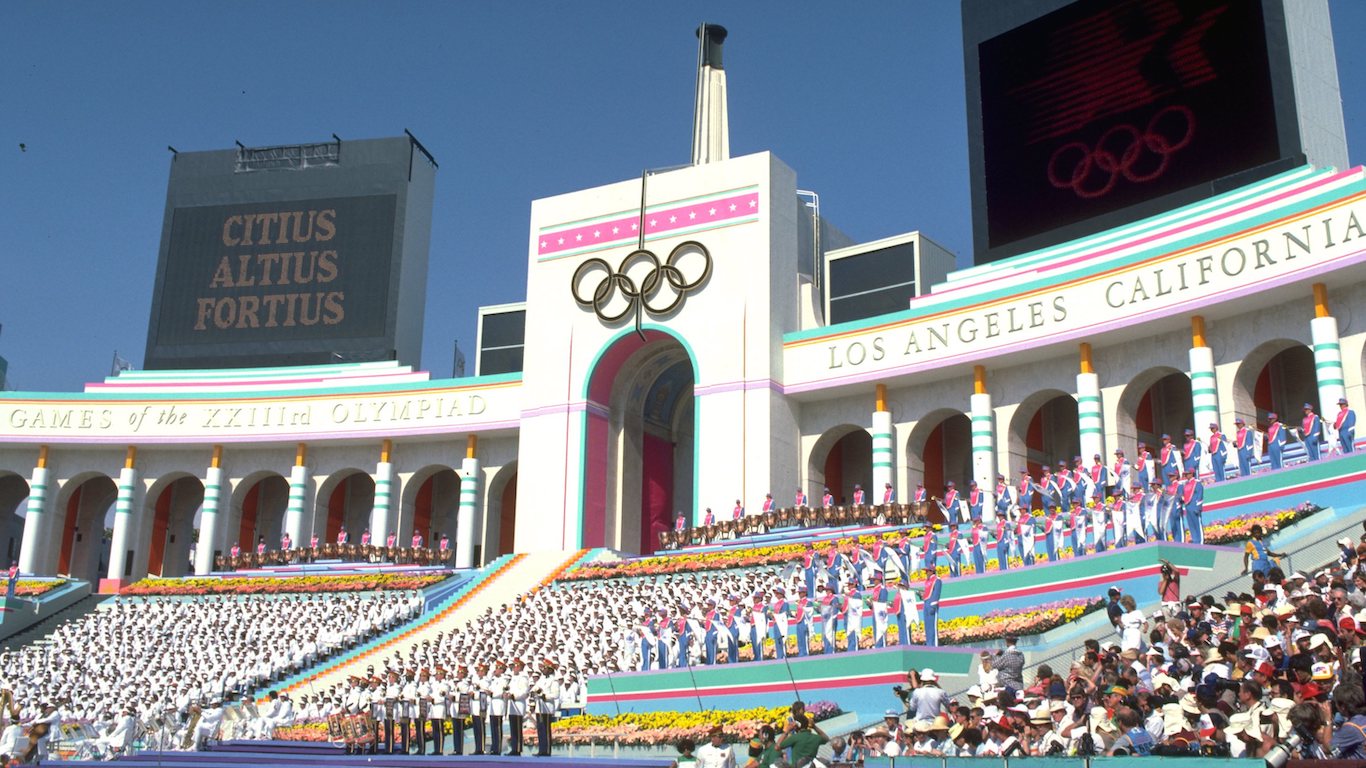
1980s
> United States population: 226,542,199
> New York: 7,071,639
> Chicago: 3,005,072
> Los Angeles:2,966,850
> Philadelphia: 1,688,210
> Houston: 1,595,138
New York City posted the largest loss of population by a city in U.S. history, shedding about 823,000 people in a 10-year span. The nation’s biggest city was beset by crime, drug and financial problems, and teetered on the brink of bankruptcy in 1975. The population shift to the Sun Belt was underscored by the first appearance in the nation’s 10 most populous cities by San Diego and Phoenix. The 1980 census marked the last appearance in the top 10 for Baltimore.
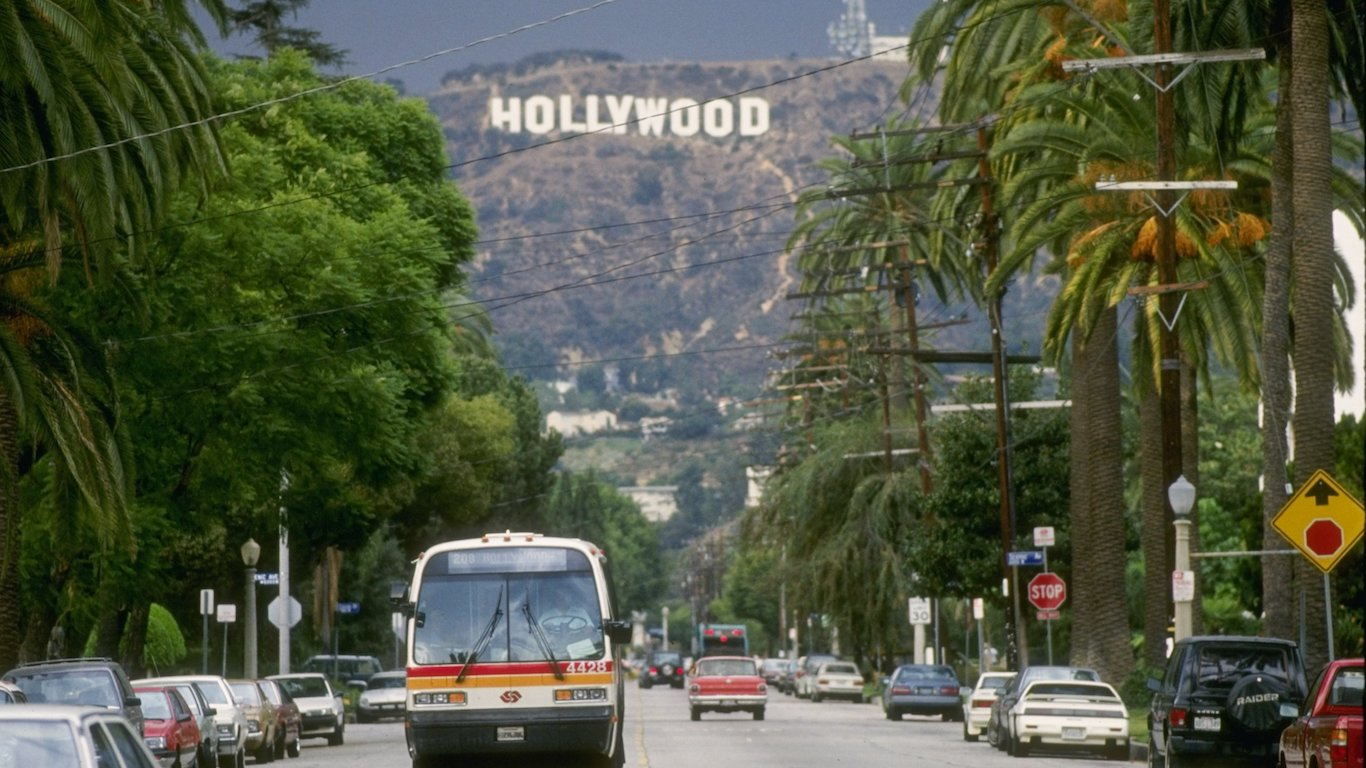
1990s
> United States population: 248,709,873
> New York: 7,322,564
> Los Angeles: 3,485,398
> Chicago: 2,783,726
> Houston: 1,630,553
> Philadelphia: 1,585,577
A majority of the top 10 most populous cities were in the western portion of the Sun Belt for the first time. Los Angeles overtook Chicago to become the second-largest U.S. city. Chicago had been the second-most populous city for 100 years. Chicago’s population fell in every census since 1950. Three Texas cities appeared in the top 10 at the same time for the first time — Houston, Dallas, and San Antonio.
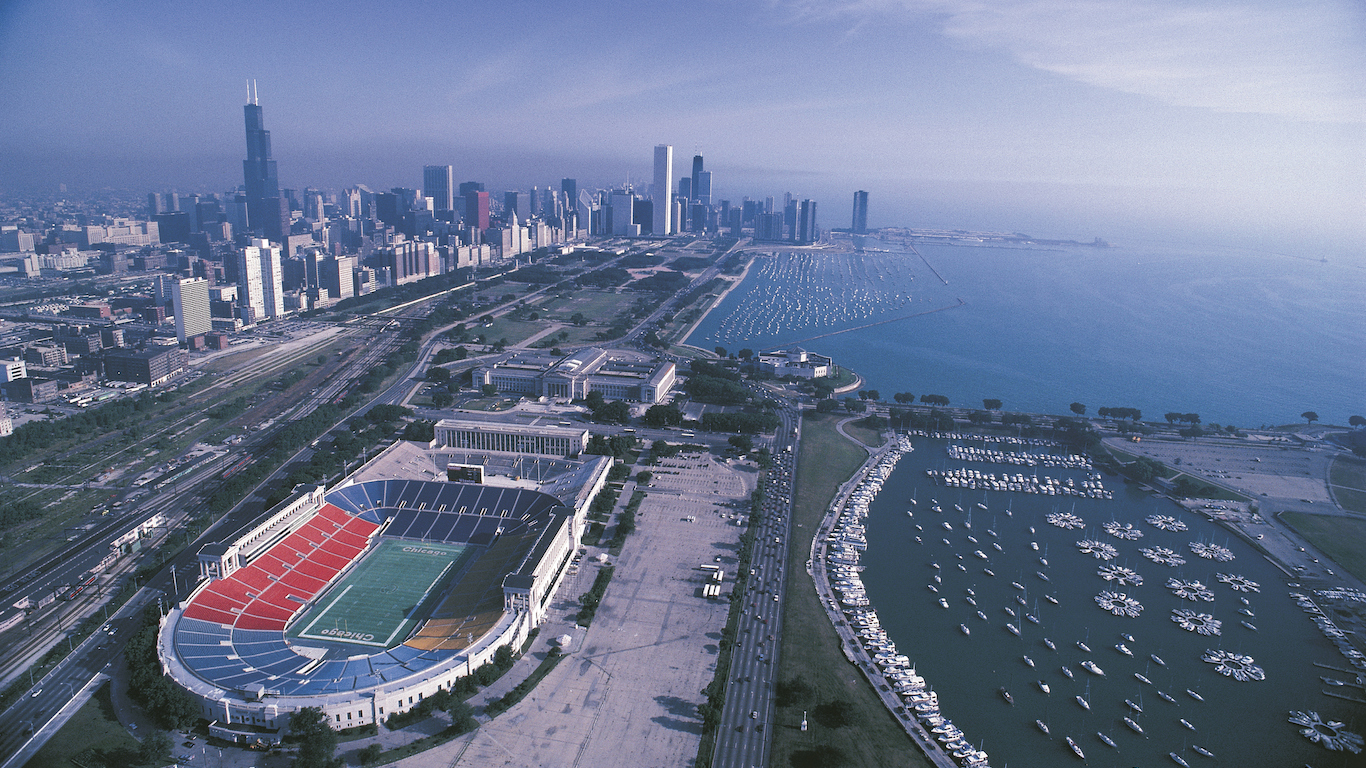
2000s
> United States population: 281,421,906
> New York: 8,008,278
> Los Angeles: 3,694,820
> Chicago: 2,896,016
> Houston: 1,953,631
> Philadelphia: 1,517,550
A technological revolution revamped the economy, and helped boost populations in many major cities. New York City was the first city in the United States to top 8 million; Detroit was the first U.S. city whose population slid under 1 million, after having a population as large as 1.85 million in 1950, as the once-mighty automobile industry adjusted to the reality of competition from imports. Phoenix, Arizona, was the only state capital with more than 1 million people.
[in-text-ad-2]
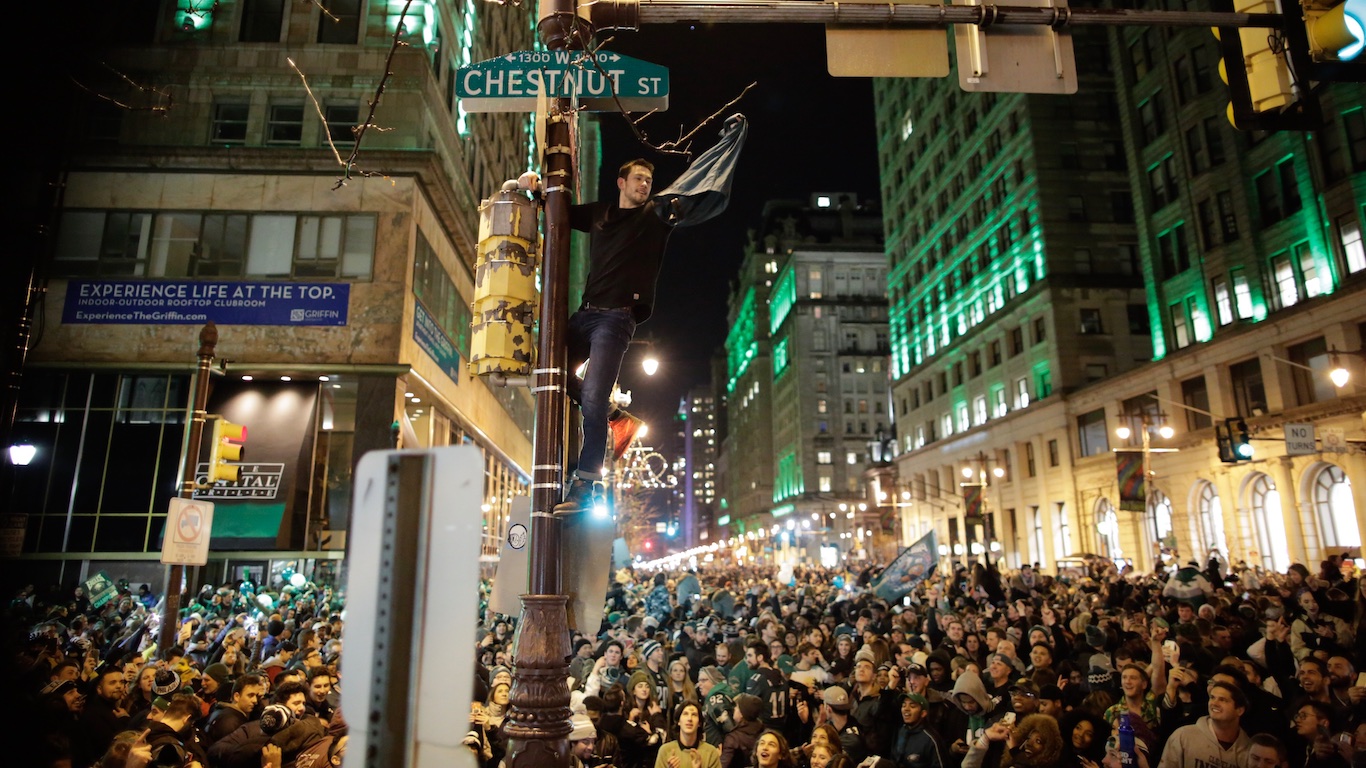
2010s
> United States population: 307,745,538
> New York: 8,175,133
> Los Angeles: 3,792,621
> Chicago: 2,695,598
> Houston: 2,099,451
> Philadelphia: 1,526,006
The last census marked the first population gain for Philadelphia since 1950, buoyed by a rise in births and an increase in immigration. Seven of the country’s 10 largest cities in 2010 were located in the Sun Belt region.
Credit card companies are pulling out all the stops, with the issuers are offering insane travel rewards and perks.
We’re talking huge sign-up bonuses, points on every purchase, and benefits like lounge access, travel credits, and free hotel nights. For travelers, these rewards can add up to thousands of dollars in flights, upgrades, and luxury experiences every year.
It’s like getting paid to travel — and it’s available to qualified borrowers who know where to look.
We’ve rounded up some of the best travel credit cards on the market. Click here to see the list. Don’t miss these offers — they won’t be this good forever.
Thank you for reading! Have some feedback for us?
Contact the 24/7 Wall St. editorial team.